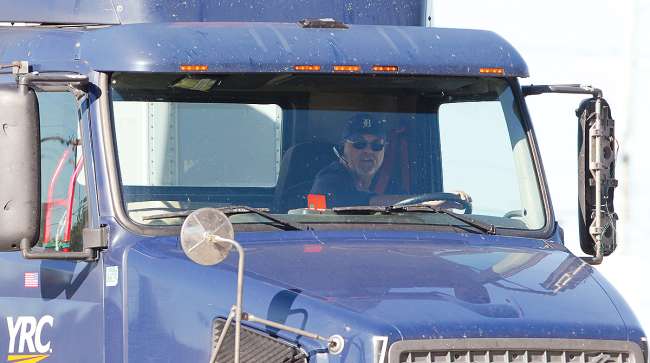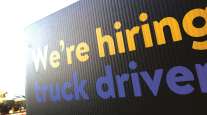Senior Reporter
Stay Metrics Identifies Why Drivers Leave So Soon

[Stay on top of transportation news: Get TTNews in your inbox.]
Recent research concluded about one-third of newly hired drivers at a broad range of motor carriers failed to last 90 days, but experts agreed carriers could help stem the costly turnover.
Carriers, the expert said, could be more transparent about their work environment, and listen for telltale warning signs that emerge during hiring and orientation.
New data from Stay Metrics to help you onboard drivers! Read our free data report to find the top 5 things you should watch with newly brought-on drivers.
At #Accelerate19 or heading to #ATAMCE19 ? Let's chat about the results!https://t.co/nWGnsZEyI6— Stay Metrics (@StayMetrics) October 1, 2019
Stay Metrics, a retention strategy firm, reported Oct. 1 its Stay Days Table found in the first quarter of 2019 only 64.9% of drivers hired in that period lasted 90 days. The South Bend, Ind.-based company surveyed 70 carriers.
Tim Hindes, co-founder and CEO of Stay Metrics, said, “The goal of our latest research project was to give motor carriers a list of five things they should be watching out for when bringing on new drivers.” The key takeaway was transparency is your friend. The more you share in advance, the better.
The company sent out a “first impressions” survey followed by an “early driver experiences” survey several weeks later. Researchers compared responses for both surveys as to whether drivers were with their carriers at the 90-day mark.
Survey questions were then ranked according to the strength of their correlations to turnover.
Four of the top five questions centered on transparency:
• My recruiter accurately described what it would be like to drive for this carrier.
• My recruiter accurately explained how much my settlement would be.
• My recruiter accurately explained what kind of runs I would make.
• In orientation, I accurately learned how much settlement I would receive.
The fifth question is one of the most important indicators Stay Metrics indicated it uses to determine if a driver is at risk of leaving: “I would recommend this carrier to another driver.”
That question is based on the Net Promoter Score, a widely accepted measure of company loyalty.
Researchers also performed a word cloud analysis of survey text responses that further revealed what influenced drivers to increase or decrease their overall opinion of a carrier.
Key words focused on the same topics — work, pay and drivers. This observation suggested the same things that sway drivers to like a carrier are the same things that, if done poorly, sway them to dislike a carrier, according to the company.
The true cost of driver retention is $8,000 to $10,000, from when a driver is recruited until they are fully productive, said Lana Batts, co-president at Driver iQ, which provides background checks.
Although driver retention went to #6 from #3, it's still clearly a big issue. The panel suggested that it might cost carriers as a while over $1 billion. #ATAMCE2019 pic.twitter.com/G0aeHv3xYb — Stay Metrics (@StayMetrics) October 6, 2019
The 70 fleets represented in the Stay Metrics index, “while certainly a large enough sample to run quality analyses, it was not a randomly selected sample of fleets within the industry. Thus, I would not say that the analyses are representative of the industry at large. However, I would say that it provides evidence of a potential trend in the industry, and that it is certainly helpful for individual carriers who are considering their own operations,” said Bradley Fulton, director of research at Stay Metrics.
Fulton said it can be difficult for carriers to make broad changes and then have them stick. “It is easy to slip back into old habits. Ongoing valid and comprehensive measurement, and responsiveness to that measurement, are critical in the success quality improvement solutions.”
Meanwhile, some carriers are trying to make sure their recruiters are incentivized on retention and not recruitment, said Batts.
“You really have to train the recruiters to not only recruit, but also listen,” she said. “Did the candidate really hear what I said? Is there another way I can say that maybe he or she will understand it better than the way I said it before?”
Batts sat with a recruiter once who was talking with a potential entry-level driver. After the candidate left, the recruiter told her, “He didn’t hear one word I said after what he could be making annually.”
He didn’t hear: You’ll be gone on weekends, miss Christmas, kids’ birthdays, live on the road and use public showers and restrooms, wait at docks, and deal with erratic drivers of cars.
Want more news? Listen to today's daily briefing:




